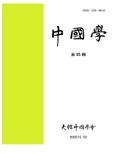- 영문명
- The Paradox and Salvation of Gemai’s poetry
- 발행기관
- 대한중국학회
- 저자명
- 김소현(So-Hyun Kim)
- 간행물 정보
- 『중국학(구중국어문론집)』第92輯, 287~307쪽, 전체 21쪽
- 주제분류
- 인문학 > 기타인문학
- 파일형태
- 발행일자
- 2025.09.30

국문 초록
‘낙관적 비관주의자’ 거마이는 1987년부터 1991년까지 불과 4년 남짓한 기간 동안300여 편의 시를 쓰고 스스로 삶을 마감했다. 거마이는 70년에 달하는 현대 한어(汉 语) 시의 역사를 언어의 자주적 지위가 인정되지 않은 과정으로 인식하면서, 구세(救 世)의 도구로 전락한 시를 구원하겠다는 포부를 품었다. 그는 삶의 허무와 비극성에도 불구하고 삶을 지속할 수밖에 없는 인간의 역설적 처지에 주목했고, 그 과정에서언어의 ‘표현 가능성’과 언어의 ‘표현 불가능성’이라는 언어적 역설을 창작의 주요한계기로 삼았다. 거마이는 또 구원을 시의 핵심 주제로 설정했다. 그는 언어를 새롭게발견하고, 시인과 언어의 관계를 새롭게 확립하기 위한 ‘시의 구원’, 그리고 절대성의추구로 시를 궁극적인 인간 구원의 과정으로 삼으려는 ‘구원의 시’에 천착했다.
영문 초록
The “optimistic pessimist” Gemai wrote more than 300 poems in four years from 1987 to 1991, and died by suicide.
Gemai considered the 70-year history of modern Chinese poetry as a process in which language's independent status was not recognized. He aspired to save a poem that had fallen into a tool of world salvation. He paid attention to the paradoxical situation of human beings, whose lives are futile and tragic, but who have no choice but to continue.
Gemai used the linguistic paradox of language's 'expressibility' and 'unexpressibility' as a major creative opportunity. Gemai also set salvation as a key theme of the poem. He tried to discover the language and establish a new relationship between the poet and the language. Through the pursuit of ‘salvation of poetry’ and absoluteness, he devoted himself to ‘salvation of poetry’ which makes poetry the ultimate process of human salvation.
Gemai had nowhere to hide in the world and inside himself, he could not save the poem and could not be saved by the poem. He became unable to escape the will of death growing on the ruins of reason.
목차
1. 서론: 시인 거마이(戈麦)
2. 거마이(戈麦)의 시와 역설
3. 거마이(戈麦)의 시와 구원
4. 결론: 거마이(戈麦)의 죽음과 시
참고문헌
키워드
해당간행물 수록 논문
참고문헌
최근 이용한 논문
교보eBook 첫 방문을 환영 합니다!

신규가입 혜택 지급이 완료 되었습니다.
바로 사용 가능한 교보e캐시 1,000원 (유효기간 7일)
지금 바로 교보eBook의 다양한 콘텐츠를 이용해 보세요!


